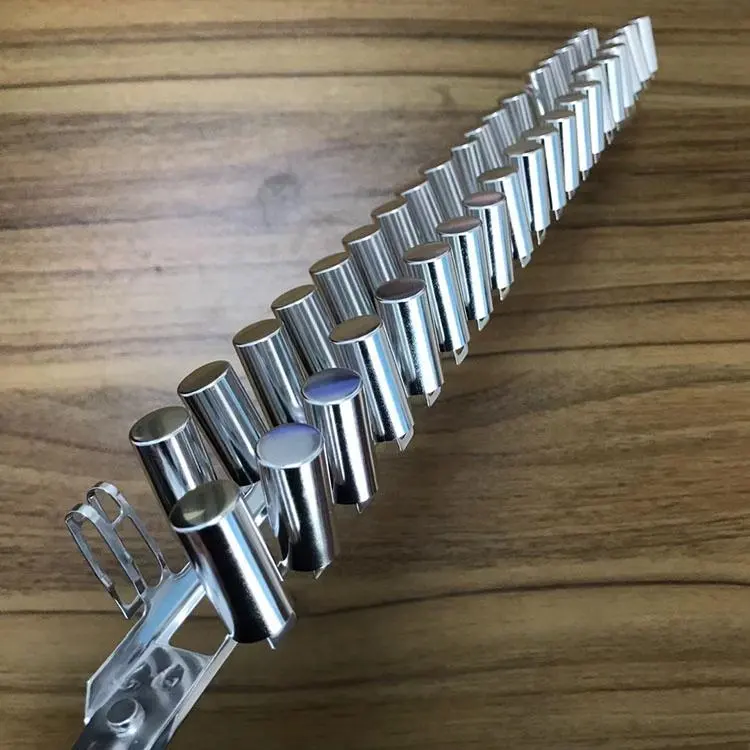
What are the Pros and Cons of chemical polishing additives?
2024-07-16 15:30
The successful implementation of the chemical polishing process is inseparable from the use of various chemical polishing additives, which remove particles on the surface of the material through chemical reactions to achieve a polishing effect.
However, different types of chemical polishing additives have their own unique advantages and disadvantages, and choosing the right additive is crucial to the process effect. This article will deeply analyze the advantages and disadvantages of several common chemical polishing additives.

The working principle of chemical polishing additives
Chemical polishing additives mainly remove particles and oxide layers on the surface of the material through chemical reactions to form a smooth and flat surface. The specific working principles include: chemical dissolution, mechanical grinding, corrosion protection, etc.
1. Chemical dissolution: The additive reacts chemically with oxides and impurities on the surface of the material to generate soluble or easily removable compounds.
2. Mechanical grinding: Some additives generate fine abrasive particles in the solution, and micro-grind the surface of the material through the action of mechanical force.
3. Corrosion protection: Some additives form a protective layer during the polishing process to prevent excessive corrosion of the material.
What are the advantages and disadvantages of chemical polishing additives?
1. Ammonium Nitrate
Advantages of ammonium nitrate:
● High efficiency: It can quickly remove the oxide layer and particles on the metal surface, and the polishing effect is remarkable.
● Wide application: It is suitable for a variety of metals, such as aluminum, copper and other soft metals.
● Low toxicity: Compared with other strong acidic additives, ammonium nitrate has lower toxicity and is relatively safe to operate.
Disadvantages of ammonium nitrate:
● Environmental impact: Although it is less toxic, ammonium nitrate still needs to be handled with caution to avoid pollution to the environment.
● High cost: The price of ammonium nitrate is relatively high, which increases the production cost.
2. Oxalic Acid
Advantages of oxalic acid:
● High gloss: The surface finish after oxalic acid polishing is high, which is suitable for high-end decorative materials.
● Effectiveness: It can react with oxides on the metal surface to remove surface dirt.
Disadvantages of oxalic acid:
● Toxicity and corrosiveness: Oxalic acid has certain toxicity and corrosiveness, and it needs to be handled with caution to prevent damage to the human body and equipment.
● Complex waste liquid treatment: The treatment of oxalic acid waste liquid must meet environmental protection requirements, which increases the treatment cost.
3. Sodium Hydroxide
Advantages of Sodium Hydroxide:
● Low cost: Sodium hydroxide is cheap and suitable for large-scale industrial production.
● Good cleaning effect: It can effectively dissolve oxides and oil stains on the metal surface.
Disadvantages of Sodium Hydroxide:
● Strong corrosiveness: Sodium hydroxide is highly corrosive and requires strict safety protection measures.
● Environmental issues: Special attention should be paid to waste liquid treatment to avoid pollution to the environment.
4. Aluminum Potassium Sulfate
Advantages of Potassium Aluminum Sulfate:
● Good corrosion inhibition effect: It can form a protective layer during the polishing process to prevent excessive corrosion of the material.
● Wide range of applications: Suitable for polishing of materials such as glass and ceramics.
Disadvantages of Potassium Aluminum Sulfate:
● Low polishing efficiency: Compared with strong acid additives, the polishing efficiency of potassium aluminum sulfate is lower.
● High cost: The price is relatively expensive, which increases the production cost.
5. Nitric Acid
Nitric Acid Advantages:
● High efficiency: It can quickly dissolve the oxide layer on the metal surface, and the polishing effect is remarkable.
● Applicable to hard metals: It is suitable for polishing hard metals such as stainless steel.
Nitric Acid Disadvantages:
● Highly corrosive and toxic: Strict operation requirements and strict safety measures must be taken.
● Environmental issues: The waste liquid treatment is complicated and must meet strict environmental standards.

Actual applications in the industry
In order to better understand the application of chemical polishing additives in actual production, we interviewed several different types of manufacturing companies.
Case 1: Electronic component manufacturing company
An electronic component manufacturing company in Shenzhen mainly produces high-precision copper wires and connectors. Mr. Liu, the company's technical director, introduced: "We mainly use ammonium nitrate for polishing. Ammonium nitrate can quickly remove the oxide layer and particles on the surface, improve the conductivity and service life of the product. Although the price is high, its high efficiency allows us to improve production efficiency."
Case 2: High-end decorative materials company
A high-end decorative materials company in Beijing mainly produces marble and granite slabs. Ms. Zhang, the head of the company, said: "We use oxalic acid solution in the stone polishing process. Oxalic acid can not only effectively remove dirt from the surface of the stone, but also improve the gloss, making the product more beautiful and durable. However, we need to pay special attention to safety during operation and do a good job of waste liquid treatment."

Future development trend
With the continuous advancement of technology and changes in market demand, chemical polishing additives will usher in new development opportunities. In the future, the application of intelligent and automated technologies will further improve the accuracy and efficiency of the polishing process. At the same time, the improvement of environmental protection requirements will prompt more companies to adopt green chemical additives to reduce the impact on the environment.
In the future, with the increasingly stringent environmental protection regulations and the continuous advancement of technology, chemical polishing additives will develop in a more environmentally friendly and efficient direction. Enterprises should flexibly adjust the polishing process according to their own product positioning and market demand in order to be invincible in the fiercely competitive market.
In summary, the Pros and Cons of chemical polishing additives need to be selected according to specific material and process requirements. Common polishing additives such as ammonium nitrate, oxalic acid, sodium hydroxide, potassium aluminum sulfate and nitric acid each have their own unique advantages and scope of application.








